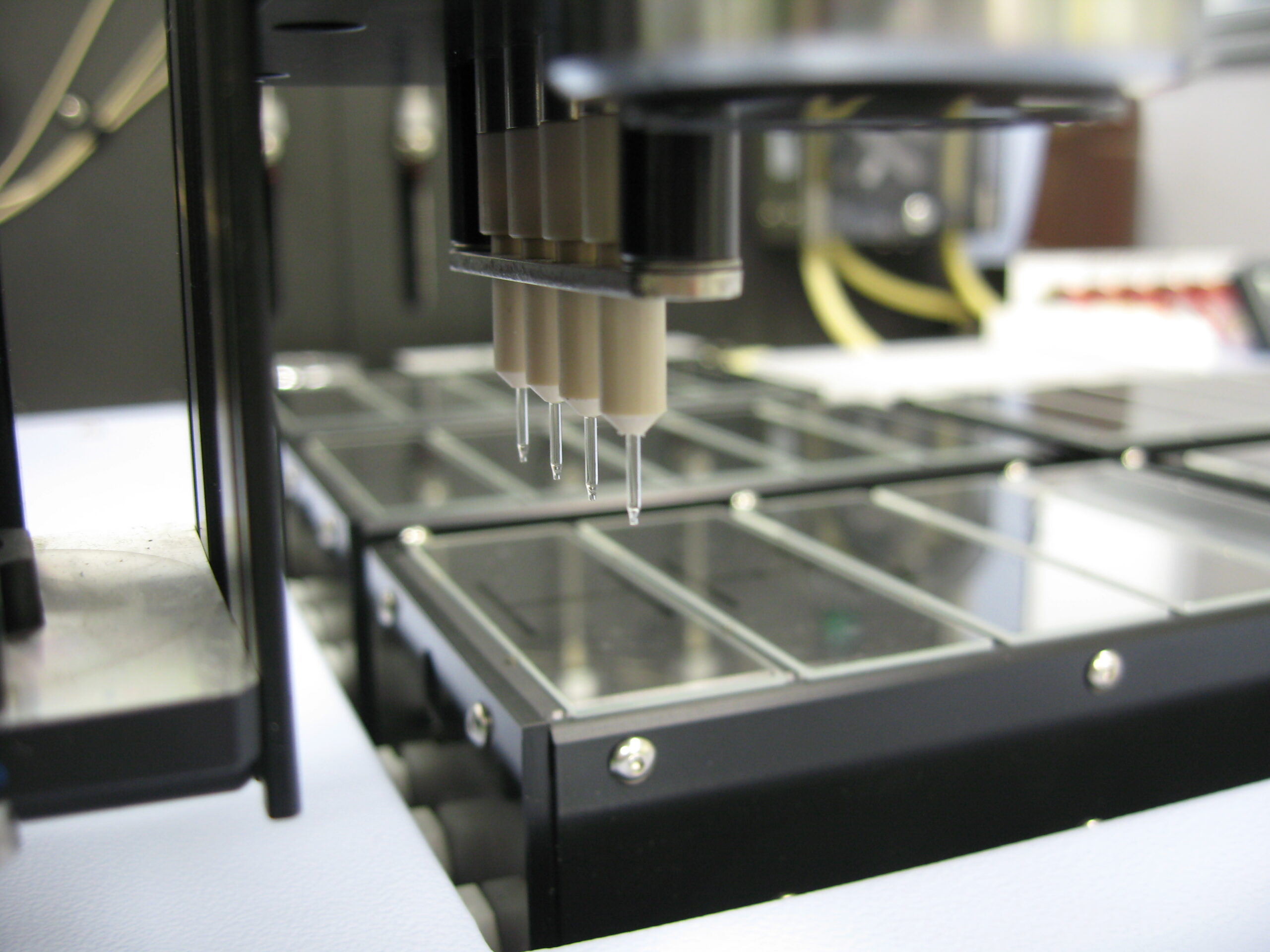Advanced fabrication and characterization of biomaterials – CIC biomaGUNE

DESCRIPTION
State-of-the-art infrastructure for the fabrication and characterization of nanostructures mainly applied to molecular imaging, regenerative medicine and biomaterials:
• 3D bioprinting
• Colloidal nanofabrication of nanoparticles and surfaces
• Deposition of biocompatible materials by phase vapor deposition and sputtering
• Elemental surface analysis by XPS and UPS
• Characterization by NMR
• Optical, fluorescence and Raman Microscopy
• Transmission and Scanning Electron Miscroscopy
• Atomic Force Microscopy
• Mass analysis by ICP-MS, UPLC-MS-QToF, MALDI-ToF
MOST OUTSTANDING EQUIPMENT AND COMPONENTS
Discovery 3D Evolution BioPrinterThe BioFactory™ instrument is a cutting-edge platform to explore the potential of 3D tissue engineering through bioprinting technology.
Spatial control of cells, bioactives, and extracellular matrix in a three-dimensional cellular construct is an enabling approach to construct designed organomimetic tissues for drug discovery and regenerative medicine.
Laser units for photo polymerization/ biomolecule immobilization.
Modularity: Selection of multiple dispensing technologies.
Biomanufacturing within a sterile laminar flow hood.
Repeatability of micrometer-scale processes.
Fast and easy tissue modelling via Bioprinting Suite.
The Raman microscope is coupled to four different laser excitation sources (488, 532, 633 and 785 nm) and is equipped with two ultrahigh throughput spectrometers with two Peltier-cooled detectors (back-illuminated EMCCD for vis and back-illuminated deep depletion for NIR), four gratings (2x300 grooves/mm for low and 1800 and 1200 grooves/mm for high spectral resolution) optimized for visible and NIR range.
The topographic sensor allows to measure on rough surfaces always "in-focus". The motorized scanner stage has a maximal travel distance of 50 x 50 mm2.
Is a Transmission Electron Microscope equipped with a field-emission gun (FEG) transmission with variable acceleration between 80 and 200 kV, a 4-megapixel CMOS camera (TVIPS TemCam-F216) and two STEM detectors (BF & HAADF) in combination with an EDX detector (Oxford UltimMax updated in 2020), and has the GATAN 626 cryo-transfer system
It is an X-ray Photoelectron Spectroscope equipped with a 100 mm radius PHOIBOS analyser. It allows to perform analysis of elemental composition and determine the energy of the valence levels up to a depth of 5 to 10 nm. It has two non-monochrome x-ray sources (Al and Mg K-) and a UVS 10/35 ultraviolet lighting source (updated in 2020). Surface layers can be removed from substrates by using Argon ion plasma, as well as making a composition profile based on applied time.
Zeiss LSM 880 Airyscan and MaiTai DeepSee (updated in 2021). It is equipped with three Ar laser excitation sources (458, 488 and 514 nm), DPSS (561 and 590 nm) and HeNe (633 nm). It is coupled to a MaiTai DeepSee multiphoton laser, with variable excitation range (690 to 1040 nm). It has two PMT photomultiplier type detectors, one standard and one with high sensitivity in the infrared range, plus a GaAsP detector for visible detection. It also has a BIG-2 detector module, consisting of two GaAsP detectors for high sensitivity multiphoton measurements. Allows measurements of correlation spectroscopy and cross-correlation of fluorescence.
SERVICES OFFERED BY THE ASSET

3D Bioprinting

Atomic Force Microscopy of biomaterials

Colloidal Nanofabrication with plasmonic resonance properties

Electron Microscope Characterization of biomaterials

Elemental composition analysis of surfaces by X-ray Photoelectron Spectroscopy XPS

Optical Microscopy Characterization of samples

Optical Spectroscopic Characterization of samples
ENTITY MANAGING THE ASSET

Asociacion Centro de Investigación Cooperativa en Biomateriales · CIC biomaGUNE
Contact person: Angel Martínez


